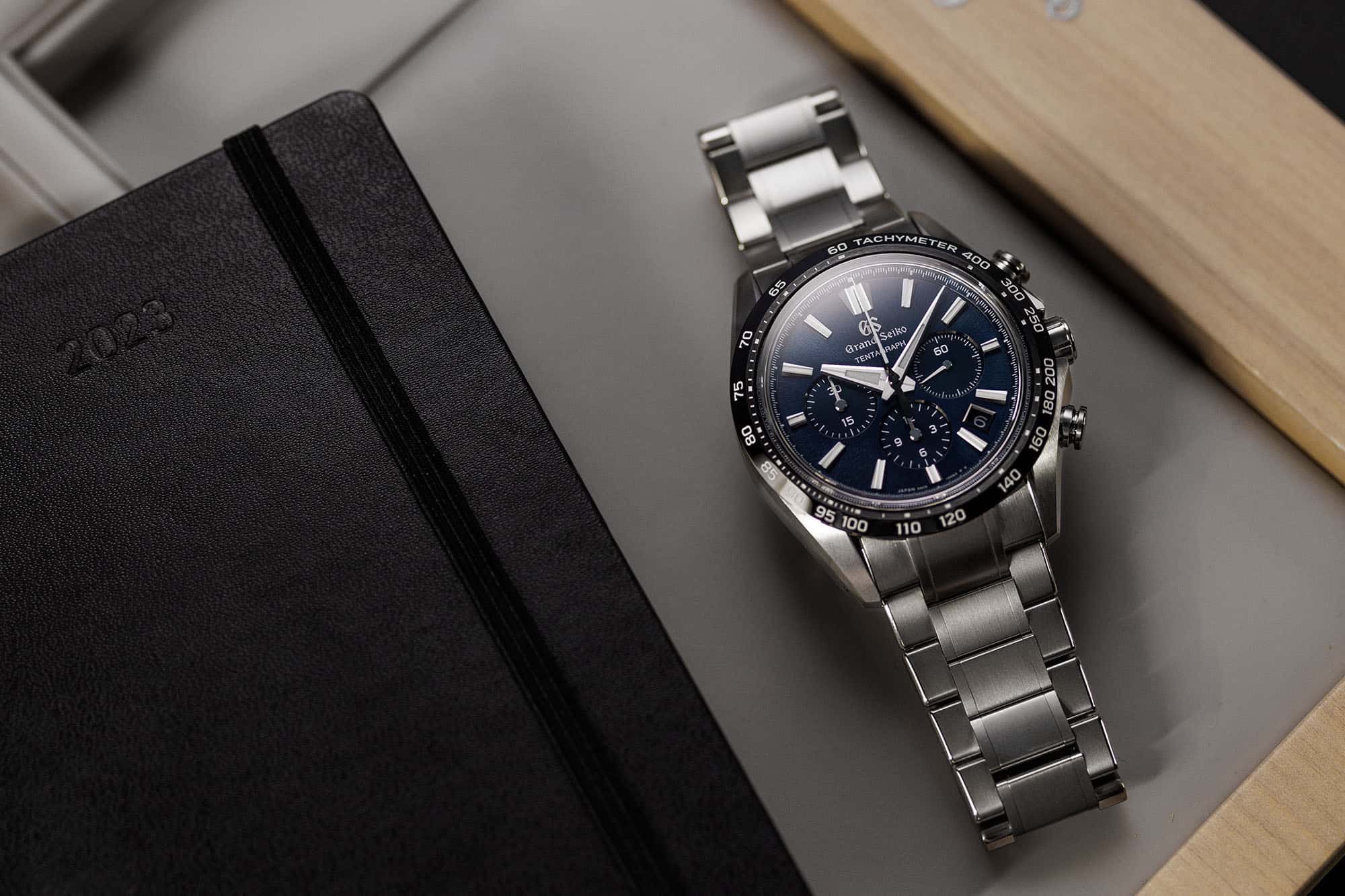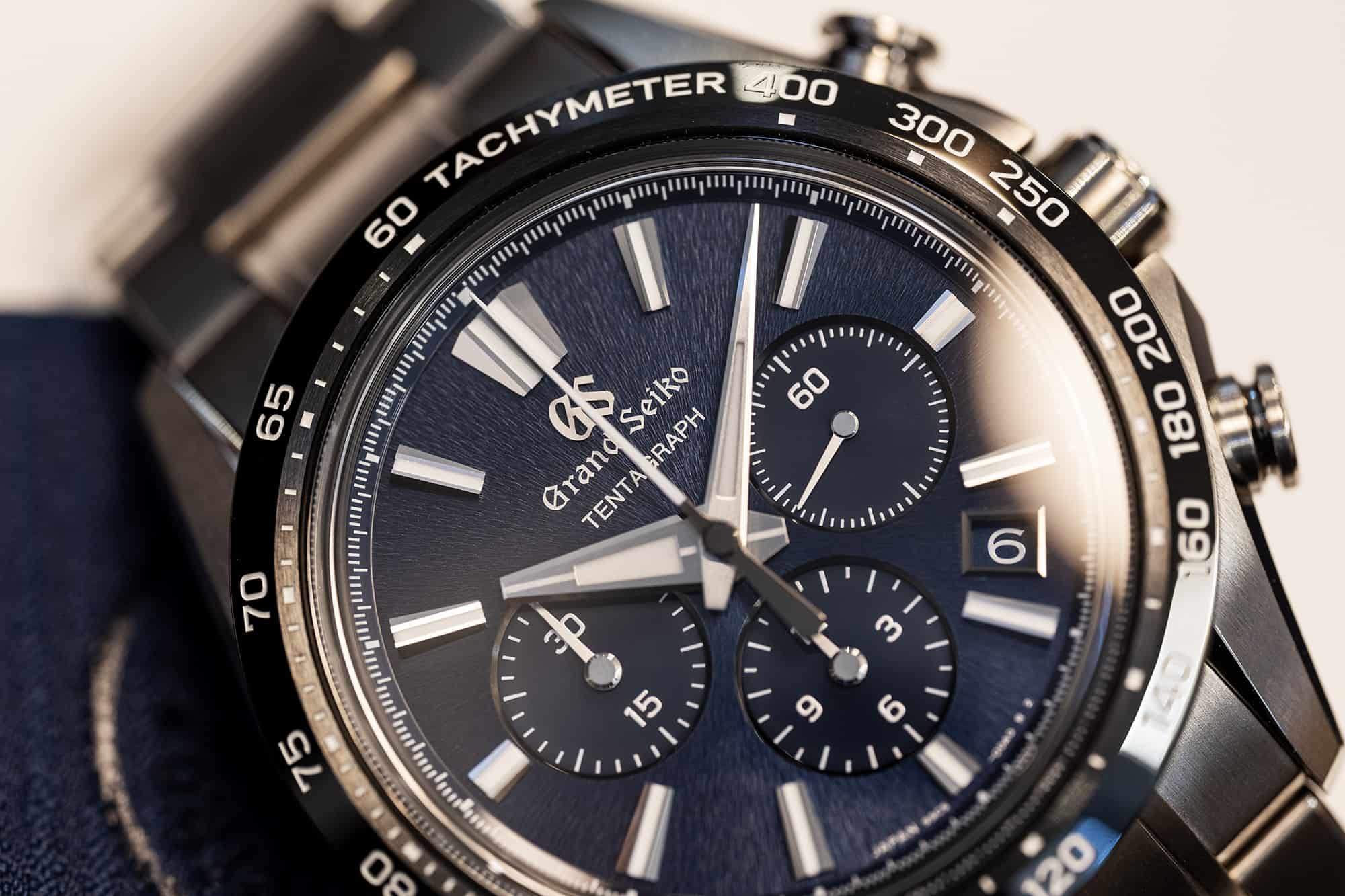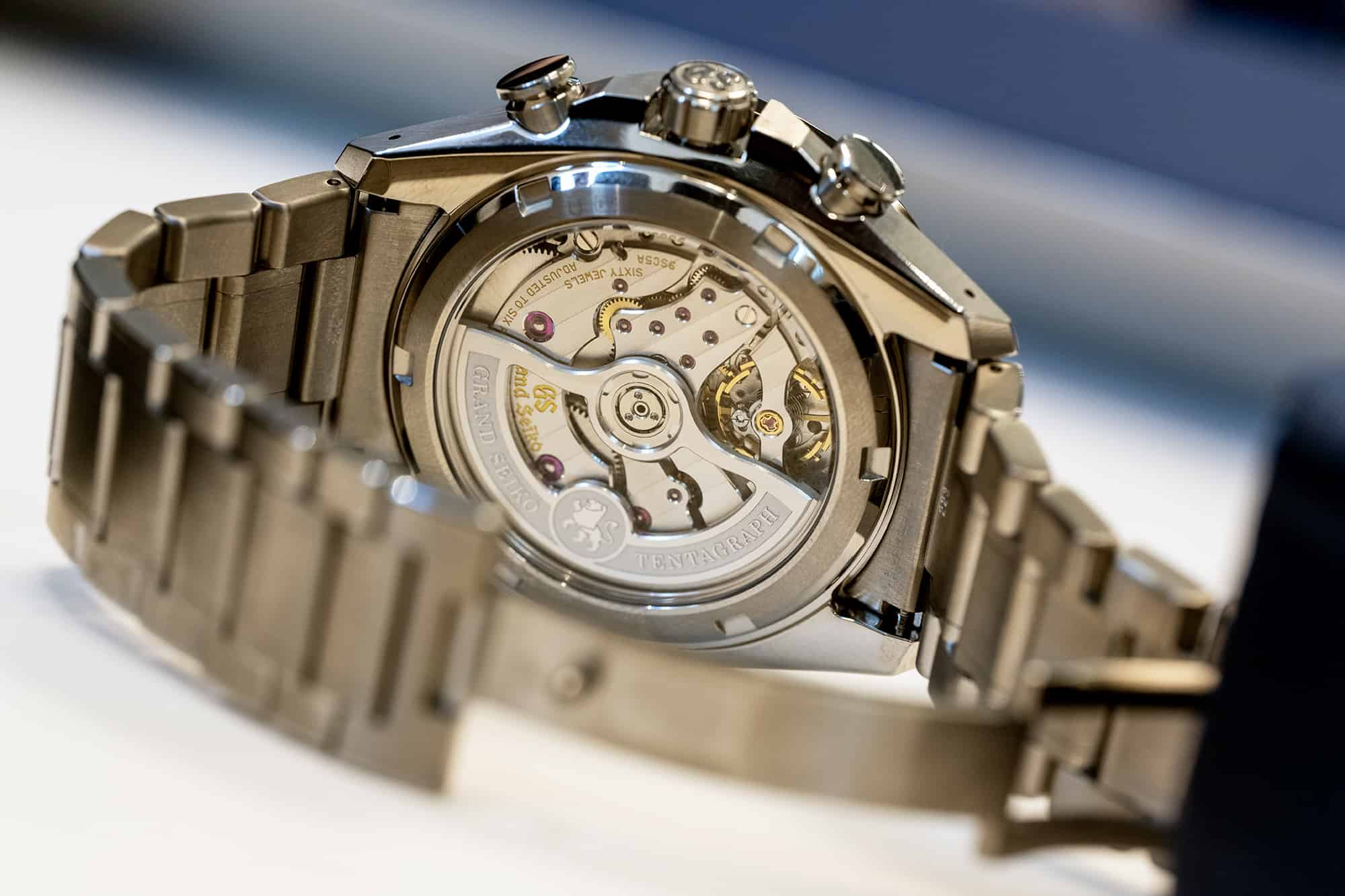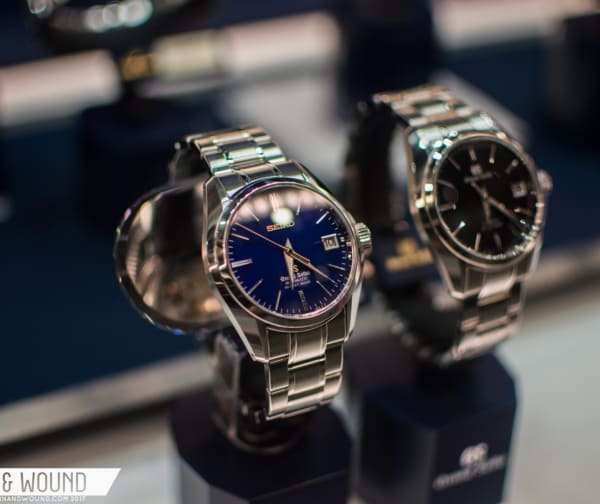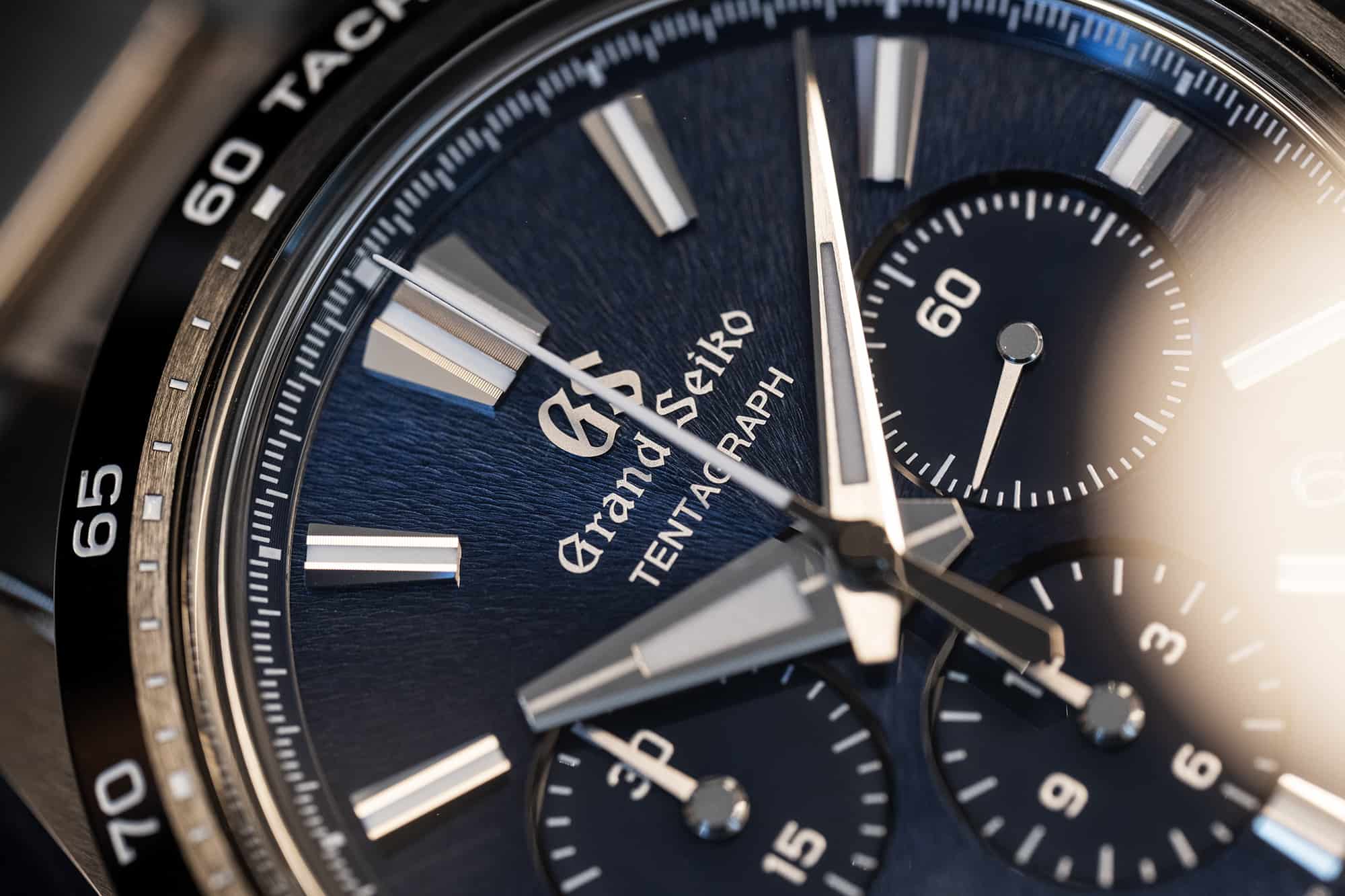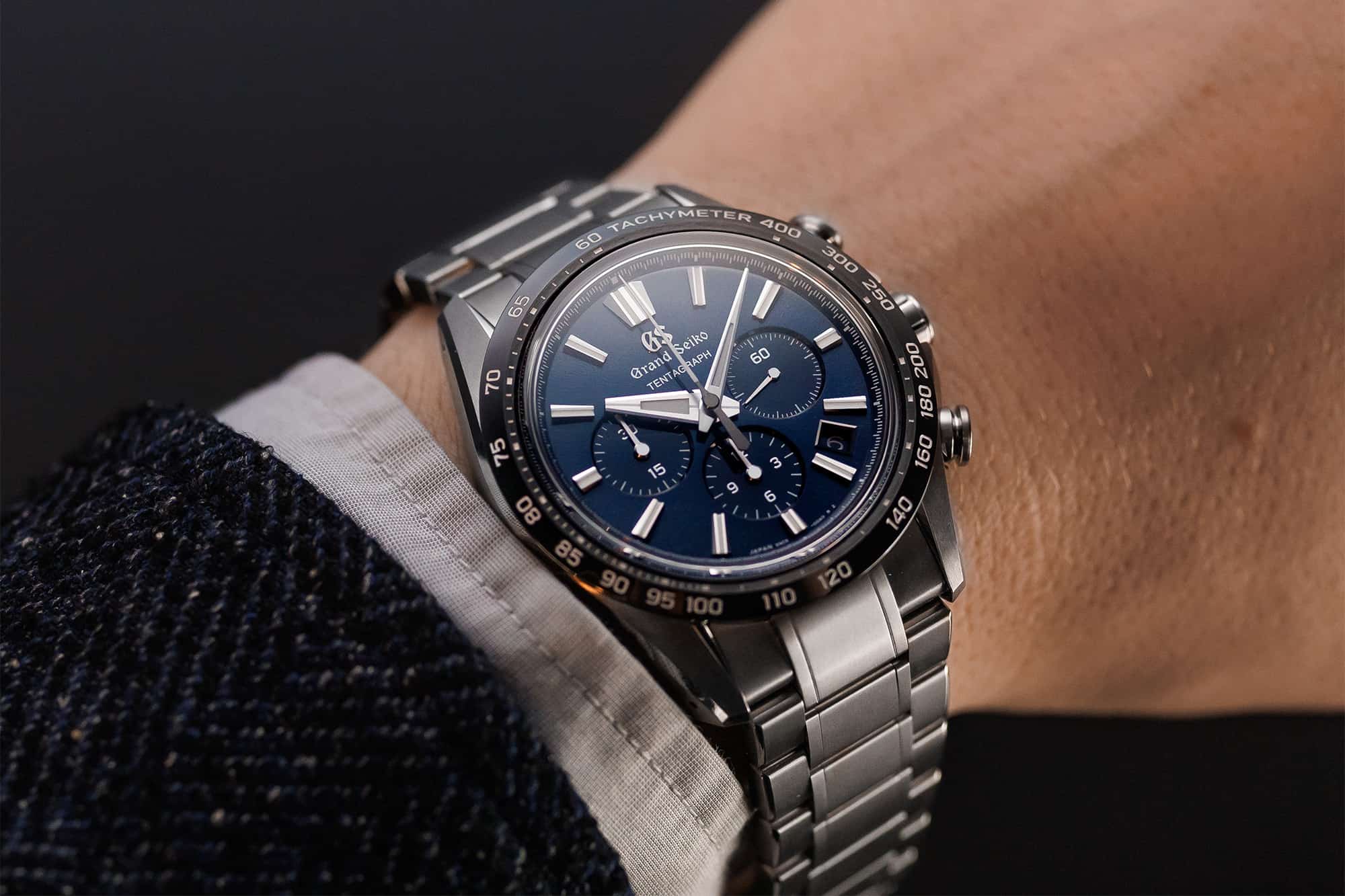This year’s marquee release from Grand Seiko is the all new Tentagraph, an imposing and technically impressive chronograph that makes use of a new high beat caliber and a case shape derived from previous watches in the Evolution 9 Collection. It’s kind of hard to believe, but up until now, Grand Seiko didn’t have a purely mechanical chronograph in their collection. Spring Drive has ruled the day if you need a watch for timing laps, steaks, or anything else, but that changes this year.
Grand Seiko Unveils the Tentagraph, a New Sports Chronograph with a Three Day Power Reserve and High Frequency Movement
With the Tentagraph, which carries reference SLGC001, Grand Seiko introduces a new movement, Caliber 9SC5. This movement is notable for its shared architecture and essential technical features with the next-gen 9SA5, the double-impulse escapement caliber introduced by the brand a few years ago. We’ve seen that basic time and date caliber adopted in a variety of excellent watches in the relatively short time it’s been in production, but this is where the fun really starts: we now have a new caliber derived from the 9SA5, which of course would lead anyone following the brand to think that a) we’ll see more chronographs coming from Grand Seiko within the Evolution 9 Collection and b) we’re likely to see more complications. The 9SA5 now takes its place as a halo caliber, with many possibilities ahead when it comes to variations large and small.
Like the 9SA5, the 9SC5 beats ten times per second and is powered by two barrels giving it a three day power reserve. That’s with the chronograph running, and Grand Seiko is boasting this is the longest power reserve of any 10 beat per second chronograph in production today. They are positioning this as a highly technical sports watch, which feels well earned given the impressive specs. Looking back at the release of the 9SA5, it now seems incredibly logical that it would be adapted to suit a chronograph given the high beat rate and the benefits inherent in such a movement when it comes to timing events.
In terms of the watch’s design, the titanium case measures 43.2mm in diameter and shares some visual cues with previous Grand Seiko chronographs (those pushers!) but has a lot more in common with earlier Evolution 9 watches. It’s big, but the case isn’t nearly as aggressive and facet heavy as something like the SBGC253. It’s hefty at 15.3mm, but the contours introduced in the Evolution 9 design language hide a lot of the bulk. It doesn’t disappear on the wrist, but it’s also not completely overpowering.
The dial is a gorgeous shade of blue, a traditional color for Grand Seiko when introducing a new or special watch. It’s been decorated with the ridged Mt. Iwate pattern that many collectors will be familiar with. This dial texture is a nice balance between “always in your face” and “I’m actually not sure it’s there.” It really comes to life in direct light, but most of the time will present as blue with just a hint of something a little extra. The three register design is balanced, which feels like an obvious thing to say, but is a quality that’s been lacking from Grand Seiko chronographs until now, what with the Spring Drive power reserve indicator taking up real estate between 7 and 8 on previous chronos, and a somewhat unusual asymmetrical subdial layout. The black bezel is ceramic, with an engraved tachymeter scale.
And then there’s the name: Tentagraph. A common complaint, even among die hard Grand Seiko fans, is that the brand doesn’t exactly have a knack for naming watches. Many of the limited and special editions get nicknames based on their dial colors and textures, and points of inspiration that mostly come from the natural world, but mostly we get strings of numbers and letters that only begin to make sense as you fall further down the rabbit hole. There’s no “Submariner” or “Speedmaster” in the collection, but the Tentagraph seems to be reaching for that kind of status, with the name of the watch printed right on the dial like iconic Swiss sports watches it will compete with for a slice of the high end chronograph market. Tentagraph, incidentally, describes the watch’s key features: ten beats per second, three days of power reserve, and the automatic chronograph complication.
The Tentagraph is expected at Grand Seiko retailers and boutiques in June, and will have a retail price of $13,700.




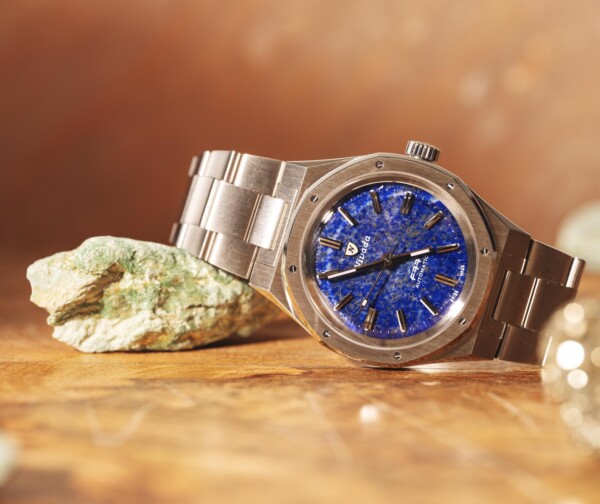




 Featured Videos
Featured Videos




